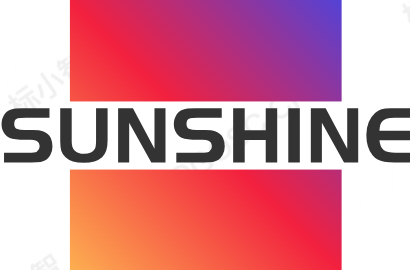SUNNY COTTAGE CO., L
-
How much does it cost to affiliate with a Thai decoration company
In Thailand, the fees associated with decoration companies vary depending on factors such as cooperation mode, company size, qualification level, and sharing ratio, usually involving the following cost structures and precautions:1、 Common forms of affiliation fees Fixed annual fee Small company: Approximately 50000 to 150000 Thai baht per year (approximately 10000 to 30000 RMB). Medium sized/fully qualified companies: 150000 to 300000 Thai baht per year (approximately 30000 to 60000 RMB). Note: Some companies may require quarterly or semi annual payments. Project division 5% to 15% of the project amount will…
-
Thai house decoration prices
The price of house decoration in Thailand is influenced by various factors, including house type, area, material grade, design style, location, and labor costs. The following is a rough price range reference (data is estimated for 2023, subject to the latest local quotation): 1. Classified by decoration grade Basic decoration (simple decoration) Price: Approximately 1500~3000 Thai baht per square meter Content: Simple painting, flooring (ordinary tiles or composite flooring), basic water and electricity renovation, basic kitchen and bathroom equipment. Suitable for: rental housing or renovation with limited budget. Mid range…
-
Comprehensive Analysis Report on the Current Situation and Future Trends of Thailand’s Decoration Market (2025)
Executive Summary Thailand’s decoration market is undergoing a dynamic transformation, driven by sustainability demands, smart home integration, and a revival of traditional craftsmanship. In 2025, the market is projected to reach $3.2 billion USD, growing at a CAGR of 6.8% (2023–2025). Key trends include eco-conscious materials, hybrid Thai-global aesthetics, and AI-driven design personalization. 1. Current Market Overview (2023–2024) Market Size & Segmentation Residential Sector (55% share): Urban condos & luxury villas dominate. Commercial Sector (30%): Hotels, co-working spaces, and retail interiors. Institutional (15%): Government projects (e.g., smart temples, eco-schools). Key…
-
Thai Decoration Craft Standards
The decoration process standards in Thailand combine local climate conditions, cultural habits, and international standards. The following are some key areas of process requirements and precautions: — ### **1. Basic Engineering**-Waterproof treatment:-Wet areas such as bathrooms and balconies should use two-component polyurethane waterproof coating, with a wall waterproof height of ≥ 1.8 meters and a closed water test for at least 48 hours.-In tropical rainy areas, it is recommended to add a waterproof mortar layer to the exterior walls to prevent leakage.-Moisture proof treatment:-Apply moisture-proof primer (such as epoxy resin)…
-
How many hours do Thai decorators work in a day
In Thailand, the working hours of decoration workers usually follow local labor laws, but actual arrangements may vary due to employers, project requirements, or seasonal factors. Here is the key information: 1. Legal standards Daily working hours: According to Thailand’s Labor Protection Law, the standard working hours are no more than 8 hours per day and no more than 48 hours per week (including overtime). Overtime limit: Daily overtime should not exceed 3 hours, and the total weekly working hours (including overtime) should not exceed 60 hours. 2. Actual situation…
-
Is Thai decoration expensive?
The decoration cost in Thailand varies depending on the region, materials, labor, and design style. Overall, it is relatively cheaper compared to China or European and American countries, but the specific cost depends on the following factors: 1. Key factors affecting prices Regional differences: Bangkok, Phuket and other big cities or tourist areas: Labor and materials are relatively expensive (such as Bangkok labor costs about 300-600 Thai baht/day, about 60-120 RMB). Small cities or rural areas: costs may be 30% -50% lower. Material selection: Local materials such as Thai tiles…
-
Thai style decoration
Thai Style Decor focuses on nature, tranquility, religious culture, and tropical charm, blending traditional Thai elements with modern comfort to create a space full of exoticism and Zen. Here are the key points to creating a Thai style: 1. Color matching Natural color tones: Based on gold, dark brown, beige, and clay colors, symbolizing temples and land. Jumping color accents: emerald green, sapphire blue, violet, or orange red (taken from Thais, fruits, and tropical flowers). Low saturation: Overall soft, avoiding overly glaring contrasts. 2. Material selection Natural materials: Teak wood,…
-
How to describe Thai decoration style
Thai decoration style is a unique aesthetic system that combines tropical charm, Buddhist culture, traditional handicrafts, and modern practicality, with distinct Southeast Asian characteristics. The following is a detailed description of its main features: 1. Integration of Nature and Religion Buddhist elements: common Buddha statues, lotus flower carvings, pagoda shaped decorations, creating a peaceful Zen atmosphere; Gold and white symbolize purity and sanctity. Natural materials: A large amount of natural materials such as teak, rattan, bamboo, coconut shells, etc. are used to preserve the original texture and emphasize the connection…
-
Thai store decoration planning
When decorating a store in Thailand, it is necessary to consider the local culture, climate characteristics, and commercial needs, while complying with relevant regulations. Here are the key points and step-by-step guidelines: 1. Preliminary preparation Market Research Understand the preferences of target customer groups (such as tourists, locals), for example: Tourist area: Highlighting traditional Thai elements (teak carving, hand drawn patterns). Urban business district: modern minimalist style mixed with Thai details (such as tropical plants and gold decorations). Reference success case: Coffee shops in Bangkok often use industrial style and…
-
Thai Interior Design Style
Thailand’s interior design is renowned for its unique cultural fusion, natural elements, and modern aesthetics, and has gained international attention in recent years. The following are the main characteristics and trends of interior design in Thailand: 1. Integration of culture and traditional elements Buddhism and Zen: Thailand is a Buddhist country, and religious symbols such as Buddha statues, niches, and lotus patterns are commonly used in design to create a peaceful atmosphere. Traditional handicrafts, such as silk, rattan weaving, wood carving, ceramics, etc., are often used to decorate details and…
